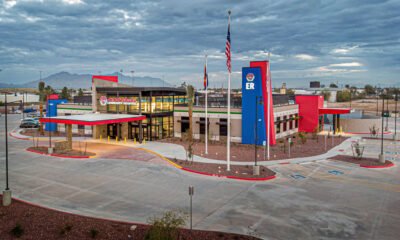Business
Yavapai-Apache Nation Secures Landmark Land Exchange with USFS

On Monday, November 4, a significant land transfer was ratified during a ceremony at the Tunlii Community Center, involving the Yavapai-Apache Nation and the U.S. Forest Service. This agreement features the exchange of 4,782 acres of tribal land located within the Prescott, Coconino, Kaibab, and Apache-Sitgreaves National Forests for 3,201 acres of adjacent federal land. The Nation’s total land holdings increased from 1,810 to 5,011 acres as a result.
Since the early 1990s, the Yavapai-Apache Nation has sought to purchase privately-owned parcels within national forests, aiming for an eventual exchange with the Forest Service. According to a press packet from the Nation, the transformation of local communities has altered the character of these federal lands, complicating management for the USFS. Some of the acquired parcels are now isolated from the main body of National Forest land.
“Today is not the end. It’s the beginning,” said Buddy Rocha Jr., a recently-elected member of the Tribal Council. He emphasized a vision for growth, housing expansion, and increased opportunities in the future.
Scott Canty, the Nation’s attorney, highlighted that this exchange would enhance the tribe’s self-determination. He noted that without this transaction, the tribe would find itself landlocked following the Yavapai-Apache Homes VIII housing project. “It will allow people who want to come home to come home,” Canty added, indicating the exchange’s potential to strengthen social heritage.
The largest piece of new land for the Nation is the 1,726-acre “Lower 260 Parcel,” which extends from W. Horseshoe Bend Drive to Interstate 17, following State Route 260. However, challenges lie ahead, particularly concerning infrastructure that limits growth potential along this corridor.
“The land we’re getting is not that nice,” remarked Tribal Council member David Kwail. He pointed out that considerable effort and funding would be required to develop the new parcels, likening them to the successful developments in the Middle Verde area. “With the Forest Service getting more land, we’re going to develop,” he assured.
The finalized land swap included various significant parcels, such as the “Upper 260 Parcel,” located north of State Route 260. Additionally, three parcels north of the Interstate 17 intersection with Middle Verde Road are rich with cultural significance, including a historic cemetery.
The newly acquired land will also encompass 238 acres south of exit 289 off I-17, which has been recognized for its agricultural and commercial potential. The Pecan Lane Character Area is particularly noteworthy, with established pecan trees dating back to the late 1920s that contribute to its designation on the National Registry of Historic Places.
Tom Binnings, from the Verde Valley Regional Economic Organization, expressed optimism about the economic opportunities afforded by the land exchange. “It’s a gateway to Camp Verde,” he stated, noting potential benefits for new businesses, particularly in distribution.
Another parcel, known as the “Cedar Ridge Parcel,” referred to by the USFS as an “orphan” piece of Coconino National Forest, is also included in the exchange despite lacking direct access.
In June 2022, the Nation and Town of Camp Verde formalized a tax-sharing agreement, anticipating that developments on the newly acquired land by non-Nation entities would yield revenue for the town, though specific estimates remain uncertain.
Camp Verde Town Manager Miranda Fisher underscored the importance of communication regarding development plans. Meanwhile, Vice Chairman Ricardo Pacheco indicated that the tribe has no immediate plans for the new land, noting the necessity of assessing infrastructure before proceeding with any development initiatives.


















